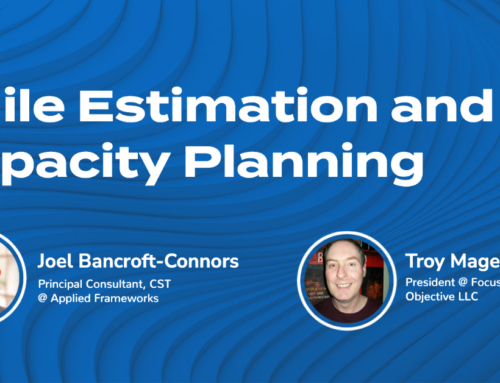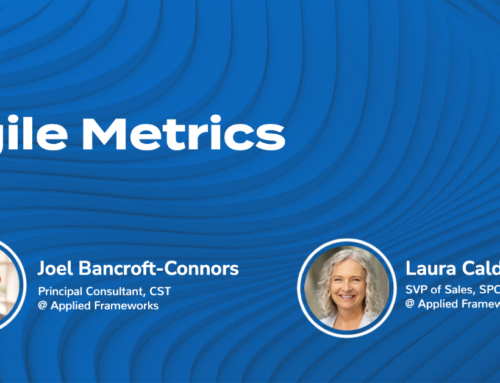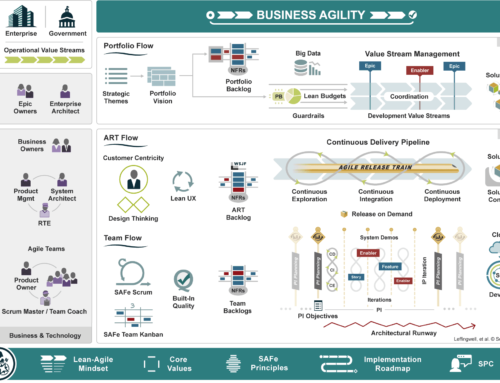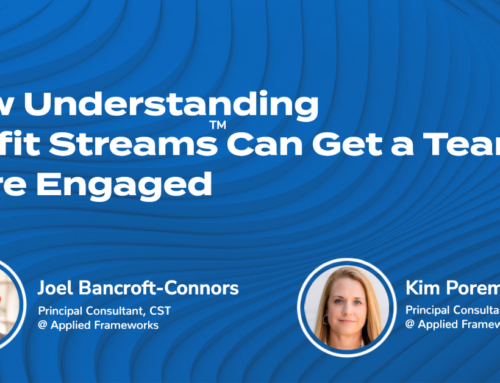 “Too many coaches relegate themselves to the kid’s table and are really ineffective at making big, organizational-level changes. Agile coaches are change agents and should be sitting at the adult table”. I am paraphrasing my colleague, but this was the gist of his lament when discussing effectiveness of some Agile coaches. It reminded me of my early Thanksgiving dinners as a kid. We would have our table in one room, while the adults held serious conversations about seriously important topics in another. The comparison immediately hit home, as I’ve seen this too many times in my consulting practice.
“Too many coaches relegate themselves to the kid’s table and are really ineffective at making big, organizational-level changes. Agile coaches are change agents and should be sitting at the adult table”. I am paraphrasing my colleague, but this was the gist of his lament when discussing effectiveness of some Agile coaches. It reminded me of my early Thanksgiving dinners as a kid. We would have our table in one room, while the adults held serious conversations about seriously important topics in another. The comparison immediately hit home, as I’ve seen this too many times in my consulting practice.
When pressed, he continued, “Leaders are not talking to each other in terms of happiness factors and velocity increases. Rather, they are discussing revenue trends, cost savings, and other business outcomes.” When they aren’t connecting, coaches and change agents become frustrated by the lack of organizational support for Agile transformations, and leaders become equally frustrated by lack of impact their Agile transformations have on their bottom line.
A few days later, while reflecting on our conversation, my colleague’s words struck me again. The problems he was articulating were rooted in basic tenets of effective change.
Taking a step back, we know that successful transformations requires bidirectional, top-down and bottom-up energy. In order to create and sustain lasting change, pressure must come from both directions and connect. The role of effective change agents, or Agile coaches, is to harness and direct energy flowing up and connect it to the energy that may be flowing down from executives and leaders. The most powerful way to connect what’s happening on the ground to the impact most leaders care about is to connect your transformation message in a way that resonates with those at the top. In essence, reorient the conversation to that which is occurring at the “adult table.”
As you change the tenor of your conversation, it’s important to re-ground on some hard realities:
-
Change is hard… don’t underestimate it.
-
Lasting change requires leadership buy-in… and you may only get one shot at it.
-
Leading change cannot be delegated… but many leaders want to do just that.
Just as there are conversation topics that you avoid Thanksgiving dinner, there are some failure patterns I recommend you avoid, lest you get relegated to the “kids table:”
-
Failing to Empathize. Assume that they want to do the right thing, even while challenged with the pressure to deliver on the bottom line.
-
Using “Us vs. Them” language. Us + Them = We. Understand the unique role leaders hold within the organization and don’t create, or further exacerbate, any divides within the organization.
-
Focusing too heavily on culture with a leader focused on strategy. Although important, leading with culture can close doors. Leading with outcomes meaningful to the leader or organization opens conversations.
-
Being unwilling to let go. It’s not about “your Agile” or your timeframe for adoption. Successful adoption of Agile Values and Principles are about those that make an impact on the organization and not necessarily those of the change agent or on the change agent’s timeline.
Moving beyond the analogy, you need to connect directly with those impactful people in the organization to affect important change. As change agents, you need to be thoughtful about your approach to identifying and interacting with those influencers and seize the opportunity to make a difference in the organization. The simple approach I recommend include leveraging a few frameworks and techniques:
Start by identifying the power players. Focus your efforts on impactful leaders using the Power/Interest grid from Making Strategy, by Colin Eden and Fran Ackermann. Prime targets will land within the top right Players quadrant. Spend the most time with those you deem have high interest and high power. Second, spend some amount of time with those in the Subjects quadrant and seek guidance from those in the Context Setters box. It’s a simple but powerful tool to focus your energy on connecting with the right people. (Pro Tip: I also recommend this framework for identifying stakeholders for products and teams.)
Now that you have identified the right people, meet individually with each of the players. Start by asking two simple questions:
-
What is important to you?
-
What can I do to help you succeed?
Be sure to do more listening than talking. As you are listening, begin to build a profile of the person that you want to influence. Key things to listen for include:
-
What are their goals?
-
What are they worried about?
-
Who do they trust?
-
Who are their influencers?
If you listen carefully, you will likely hear where Agility can be the answer.
For example, for the leader who is interested in reducing expenses, building the right things first reduces waste, resulting in cost savings.
For the leader worried about their position in the market, reduced “big upfront planning and design” delivers products to customers faster.
The key is to connect the change, and your change message, to the concerns, drivers, and goals that are important to the leader.
After your initial discovery meeting, setup a follow-up time to discuss your recommendations. Made to Stick, by brothers Chip and Dan Heath, includes an effective framework for crafting your effective message of change: SUCCESs
Simple: Identify the simple core of your change message and stick to it. You must prioritize your ideas, be a master of exclusion (what not to focus on), and stick to the core message.
Unexpected: Grab the leader’s attention by surprising them. Generate interest and curiosity for your message.
Concrete: Use sensory information and concrete images to connect to the leader’s sense of action.
Credible: Ideas need to be believable. Look for people through which you can test your message. Hint: Who does your leader trust, or are influenced by?
Emotional: Help the leader see the importance of your message. Help them connect emotionally to your idea for change.
Stories: Empower the leader to leverage a good narrative to compel others to change. Hint: Share good-news stories, or “green chutes,” within the transformation.
Avoid the common failure patterns, use a few simple frameworks to craft your message and you can claim your spot at the “adult table.” You’ve earned it by empathizing with leaders you want to influence, thoughtfully crafting your message you’ve compelled them to connect with energy found in transformation. Now, reap the rewards of sustainable, impactful change… and your permanent seat at the “adult table.”








